Front Squat Hand Position: 5 Ways to Hold the Bar
The front squat is as effective as it is infamous for its mobility demands. Unless your form is perfect to the letter, it is possible that you’ve felt discomfort or pain somewhere in your upper body as a result of its rather unusual grip.
Fortunately, the standard “elbows up, wrists back” advice is not the only way to go about performing a front squat, and can easily be replaced with an alternative grip as needed.
In this article, we will discuss what makes the different hand positions distinct from one another, as well as how to perform them safely. Additionally, equipment that may make the front squat easier to perform will also be listed as potential alternatives.
What is the Front Squat?
Before delving into the minutiae of front squat hand positioning, it’s important to ensure that we’re all on the same page.
When this article refers to the “front squat”, it specifically means the barbell squat variation where the bar is placed across the clavicles and deltoids for the purposes of lower body muscular development.
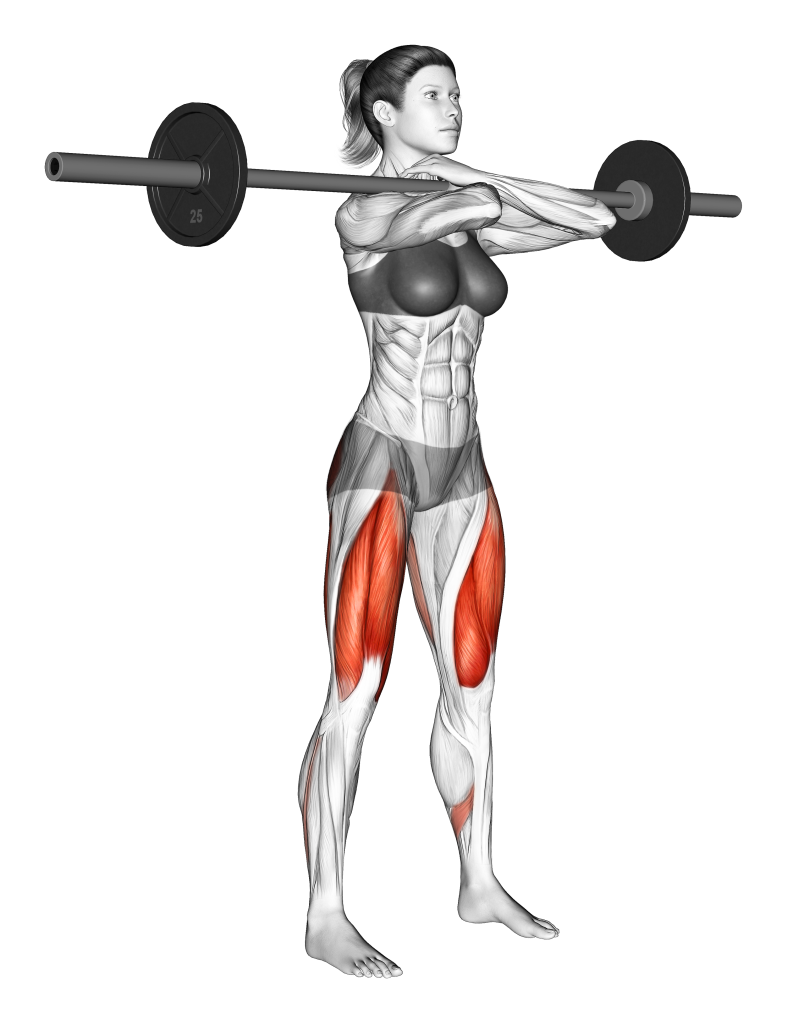
Similar exercises like the Zercher squat, goblet squat or even front squats without a barbell are inapplicable.
Why is Hand Positioning Important for the Front Squat?
Front squats require a particular focus on the position of the hands during the exercise, as poor grip mechanics can cause the barbell to slip out of the lifter’s control or otherwise force the spine to curve out of a neutral alignment.
Unlike in the case of back squats (pictured below) where the bar is quite literally resting on a “shelf” created by the shape of the lifter’s shoulders and trapezius, the top of the chest is not as pronounced and therefore requires the hands to help secure the barbell.
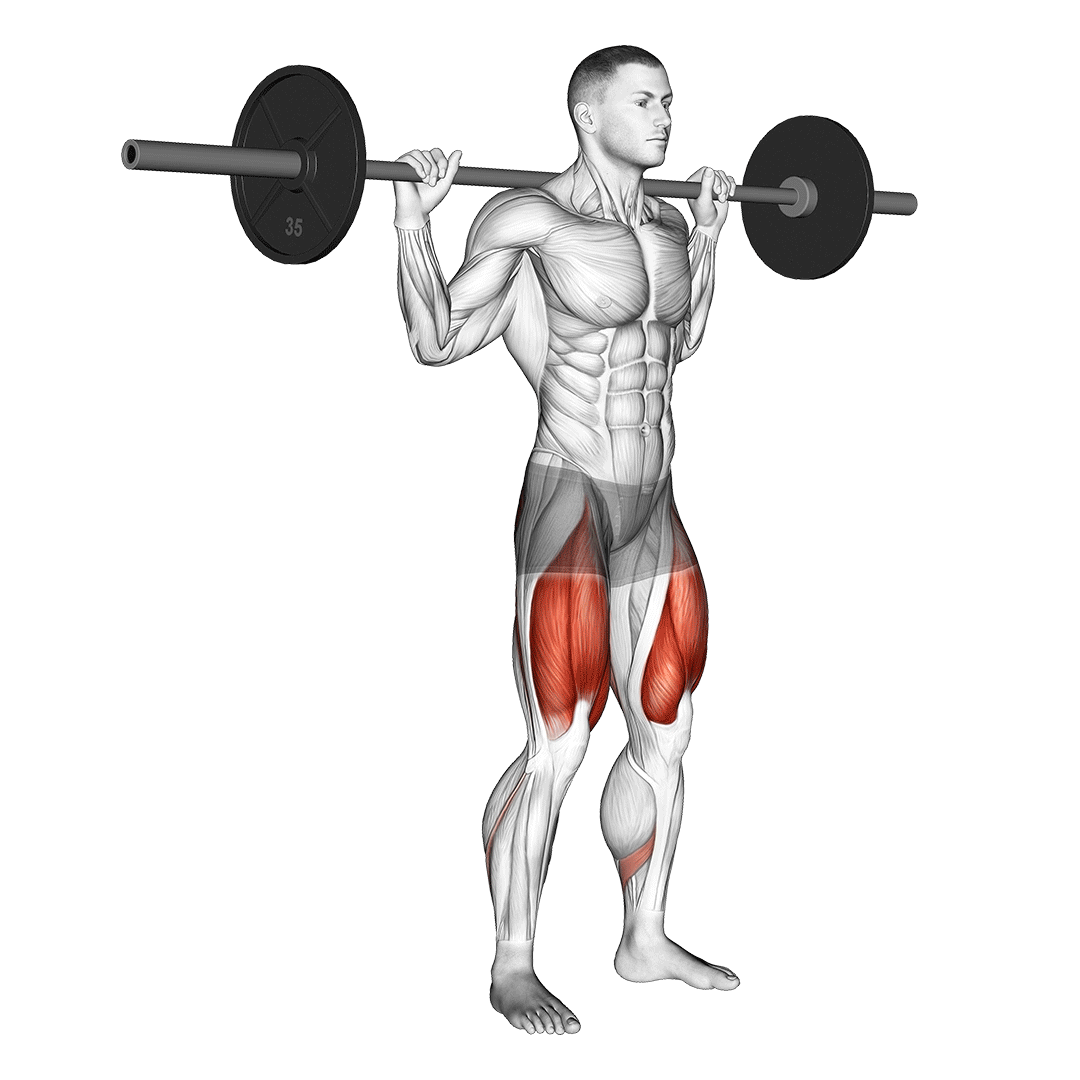
Unfortunately, mastering the intricacies of the front squat is easier said than done, and is often limited by the flexibility of the hands themselves - hence the need for alternative grip techniques.
Front Squat Hand Position
1. Standard Front Rack or Clean Grip
The traditional front squat grip is known as the “front rack” or “clean grip”, as it is much the same position used with the barbell clean exercise.
The front rack position is characterized by the barbell resting atop the collarbone and anterior deltoids, secured by the fingers as they grip it from beneath.
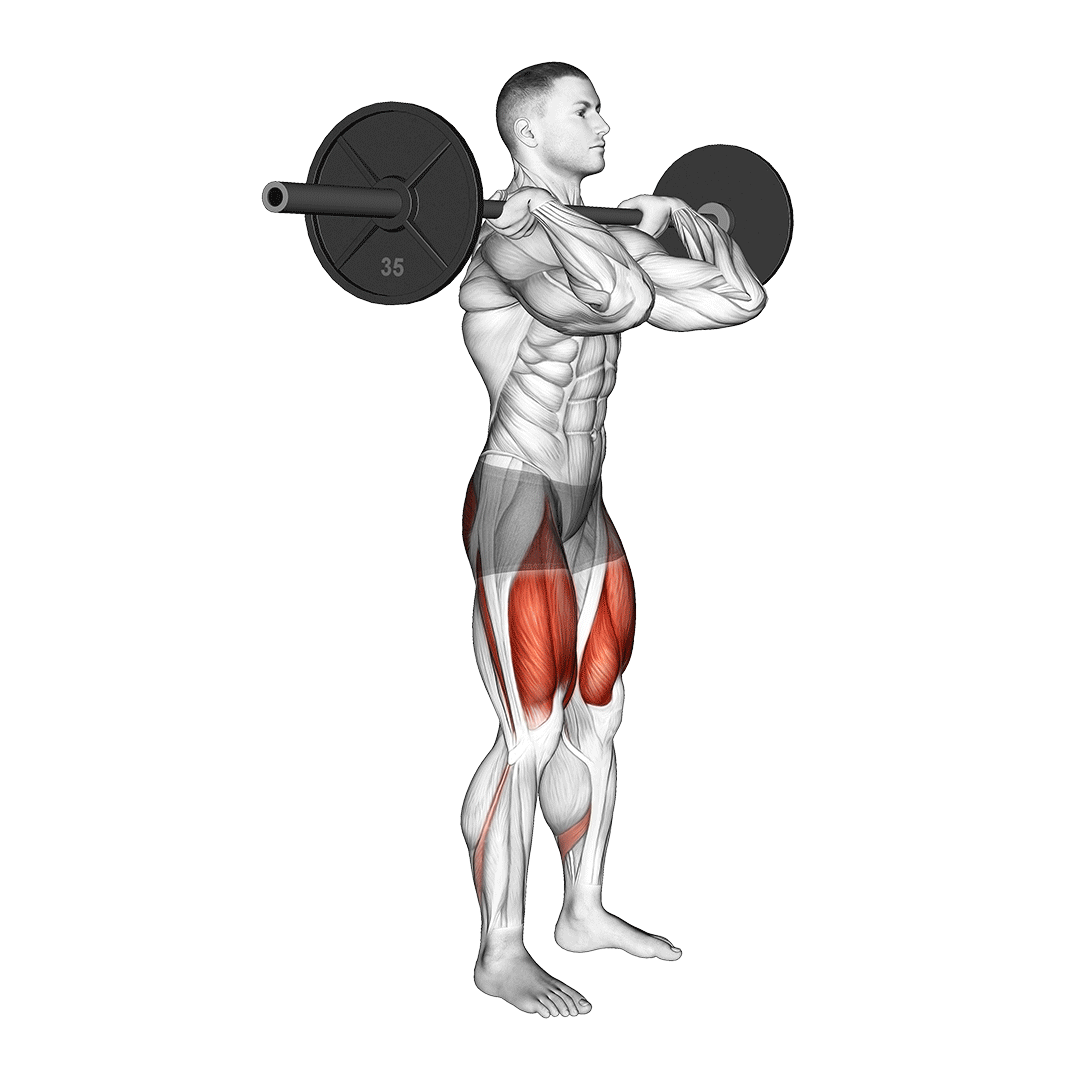
Although the clean grip is likely the most stable and secure method of performing the front squat, it is also the most demanding in terms of finger, wrist and forearm mobility - and may not be quite possible for individuals with particularly immobile wrists.
How to Do it:
To perform the front squat in the front rack position, the barbell must sit across the shoulders and clavicles with the hands set shoulder-width apart, four fingers splayed beneath the bar, thumb curled over it and the palms facing upwards.
The elbows should be facing forwards but within the space between the hands. This will help reduce tension in the forearms and aid in keeping the shoulders downwards.
While this may be difficult to master at first, a good form cue is to align the triceps with the floor, and the elbows with the shoulders.
Furthermore, it is also advised that lifters avoid gripping the barbell excessively tight with the thumb, as this may produce tension and affect wrist mobility.
2. Fingertip Front Rack
As the name implies, the fingertip front rack position is simply the conventional front rack with a more forgiving usage of the fingers.
In particular, the fingertip front rack notedly does not involve the involvement of the thumb to help secure the barbell, can be done with only the fingertips beneath the bar, and allows for a slightly wider hand distance to be adopted along the bar.
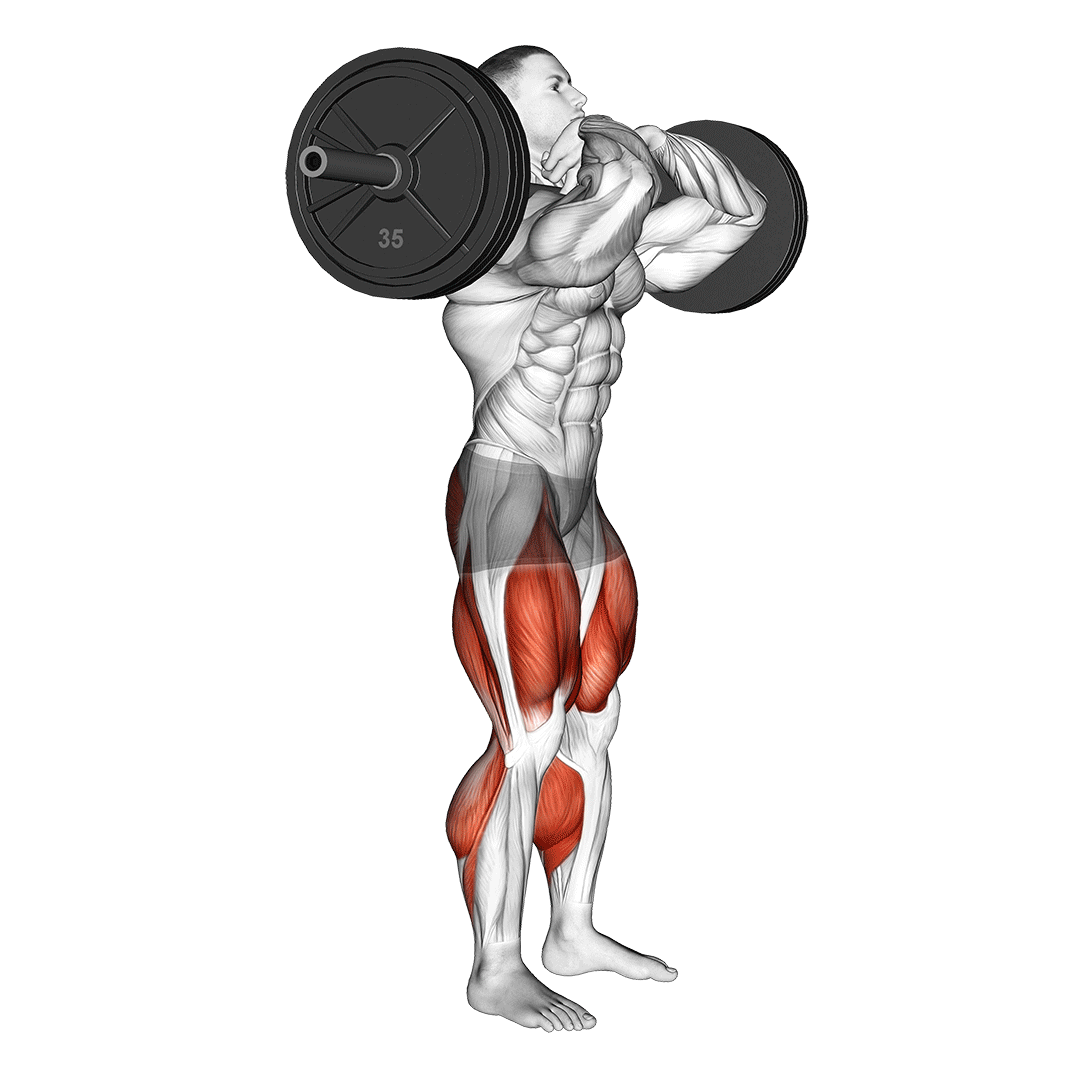
In certain cases, individuals with particularly long forearms or poor finger mobility may use less than four fingers beneath the bar.
The safety and effectiveness of doing so is often debated among weightlifters, and largely comes down to personal preference.
How to Do it:
To perform the front squat with a modified front rack grip, the barbell will be placed atop the anterior deltoids and clavicles as the elbows are raised forwards and between the hands.
The hands may be placed anywhere from shoulder-width or slightly wider along the barbell, with up to four fingers beneath the barbell to secure it.
Unlike the conventional front rack grip, there is no need to fully secure the barbell between the thumb and the fingers.
Instead, only the fingertips will be needed beneath the bar, acting more as a method of stabilizing the bar, rather than holding it in place. The thumb may remain extended and entirely absent from the bar, aiding in keeping the wrist and forearms loose.
Just as is the case with the conventional front rack, the elbows should be pointing forwards and the triceps parallel to the floor so as to better create a shelf with the upper body.
3. Cross Grip Position
The cross grip position abandons the idea of the “clean” position entirely and instead crosses the arms before the chest, producing a shelf with the front of the deltoids as the arms are extended forwards and the hands secure the barbell from the top, rather than the bottom.
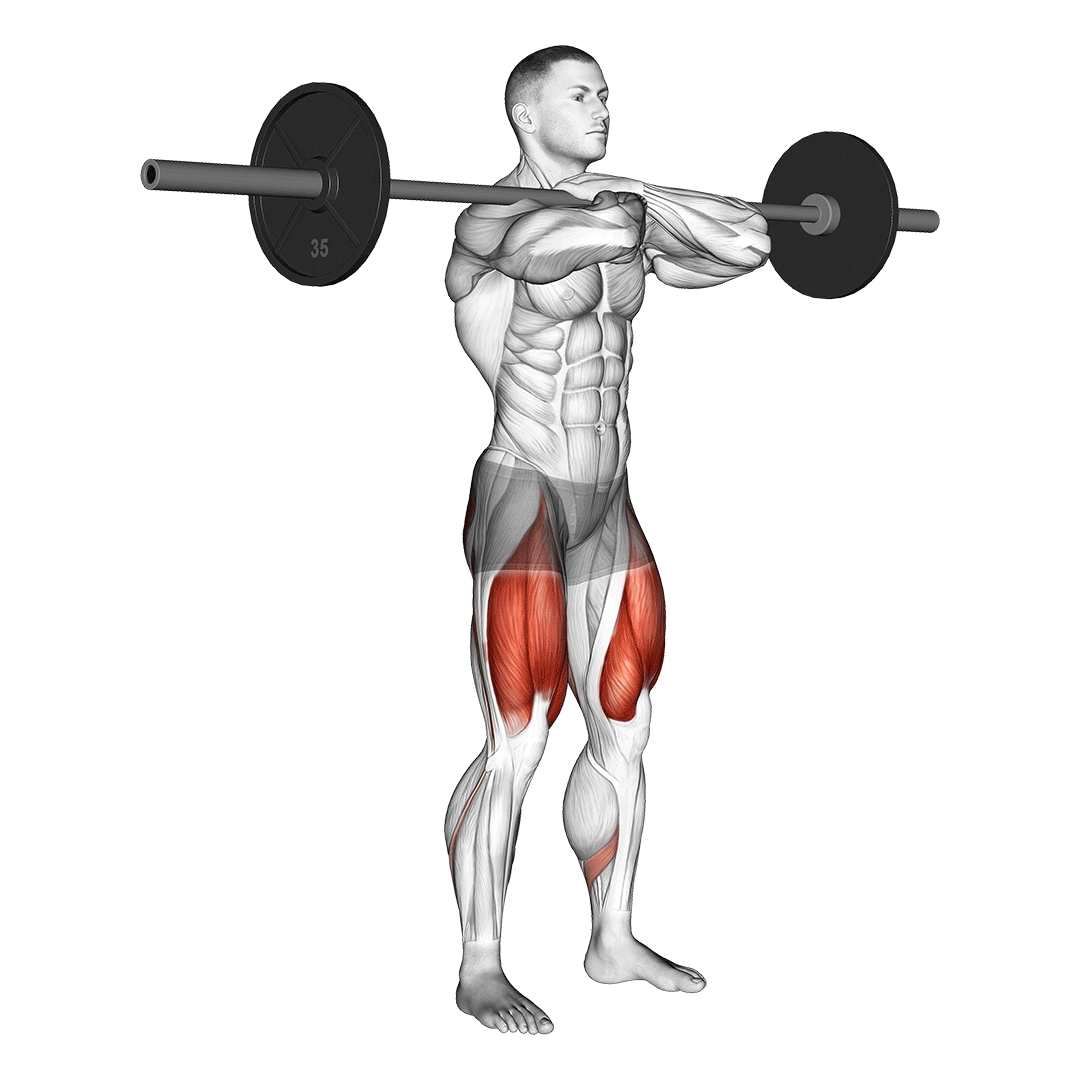
This particular front squat grip variation is useful for individuals who do not possess the mobility to maintain even the fingertip front rack variation.
How to Do it:
To assume the cross grip position for the front squat, the lifter will place the barbell atop the front of their shoulders and clavicles as they extend their arms forwards, bending the elbows inwards and placing the hands atop the bar so as to secure it against the chest shelf.
In order to ensure that the shoulders are prominent enough to support the bar, the arms should remain parallel to the floor, with additional care taken to keep the upper spine in an advantageous position as they do so.
From the lifter’s perspective, their forearms and wrists will form an “X” shape over their torso, and the elbows pointing forwards as they do so.
4. Towel or Strap Assisted Position
As a final resort, lifters may turn to the strap assisted grip to perform the front squat.
Unlike other grip techniques previously listed, this particular version makes use of a pair of lifting straps (or towels) tied around the bar at shoulder-width, with the hands holding the opposite ends of the straps.
The strap assisted grip requires no mobility of the fingers or wrists, and generally only requires that the chest shelf and elbows are positioned appropriately in order to secure the barbell.
How to Do it:
Wrapping two lifting straps around the barbell at approximately shoulder-width, the lifter will place the barbell atop their anterior deltoids and clavicles as they grip the ends of the straps with their hands, pulling upwards in a measured manner.
The tension produced by the hands pulling the straps upwards will help prevent them from slipping along the length of the barbell, and help stabilize it as well.
Apart from the hands, the elbows and upper arms should also be pointed forwards and parallel to the floor, with a neutral wrist orientation being most advantageous for gripping the straps.
5. Front Squat Harness
Alternatively, lifters who cannot perform any of the aforementioned front squat grip styles can instead make use of a front squat harness.
The front squat or Zercher harness is a piece of equipment with several upraised prongs that hold the barbell in place atop the torso without the need for the hands or arms whatsoever.
This is particularly useful for individuals with previously injured arms or those who cannot properly stabilize the barbell as they perform the front squat.
How to Use it:
To use a front squat harness, the lifter will place it over their shoulders, ensuring that it is positioned securely and that the barbell is evenly placed within the pegs. A squat rack may be needed in order to load the barbell onto the harness.
Once the barbell is secured within the harness, the lifter may grip the appropriate pegs (if available) or otherwise place both hands along the barbell in a manner that is compatible with their physiology before stepping out of the rack and performing the front squat as normal.
6. An Honorable Mention: The Zercher Squat
Although not quite a manner of gripping the bar for the front squat, the Zercher squat is mechanically similar enough to achieve much the same benefits.

Instead of placing the barbell atop the chest shelf and anterior deltoids, the Zercher squat involves the lifter holding the bar in the crook of their elbows. For individuals who find the placement of the barbell atop their chest shelf to be uncomfortable, the Zercher squat may just be the perfect alternative.
Frequently Asked Questions (FAQ)
Which Grip is Best for Front Squats?
In terms of stability, loading potential and safety, the traditional “clean” grip is best for front squats.
Why are Front Squats "Harder"?
Front squats are harder than back squats because of the barbell’s placement atop the front of the torso, rather than the back. This shifts the lifter’s center of gravity, and greatly reduces the amount of weight they can reasonably lift.
Furthermore, the traditional manner of performing front squats is quite demanding in terms of mechanical proficiency, core stability and flexibility of the arms - further increasing the difficulty of the exercise.
How Wide Should my Front Squat Grip be?
While some level of variability should be accounted for between lifters, the most general advice is shoulder-width apart, give or take several inches to either side. If you are having trouble with wrist or finger mobility, using a fingertip grip may be easier.
Final Thoughts
Although hand positioning and grip methods are vital aspects of the front squat, keep in mind that they are only a component of what should be a larger technique.
Ensure that not only your wrists and fingers are optimal, but also your spine orientation, torso angle, and lower body stance as well.
References
1 Waller, Mike & Townsend, Rob. (2007). The Front Squat and Its Variations. Strength and Conditioning Journal - STRENGTH CONDITIONING J. 29. 10.1519/1533-4295(2007)29[14:TFSAIV]2.0.CO;2.
